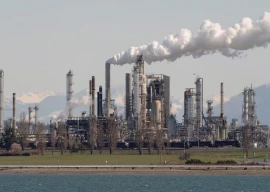
S&P Global Ratings has affirmed Pakistan’s long-term sovereign credit rating at ‘B-’ and short-term rating at ‘B’ with a stable outlook, meaning that Covid-19 has temporarily disrupted government’s aim of economic balancing as the need for foreign and local financing to meet expenditure may remain high with likely drop in the tax-to-GDP ratio in FY21.
However, Islamabad faces no imminent shortfall in financing to meet the budgeted expenditure nor does it encounter a situation that can lead to default on foreign debt repayment since it is under the International Monetary Fund (IMF) programme worth $6 billion since July 2019.
“The government had made solid progress towards important fiscal and economic reforms prior to the start of the global coronavirus outbreak and reform momentum should return once the pandemic is better contained,” Standard & Poor’s Global Ratings said in its commentary. “Multilateral and official funding will remain critical to Pakistan’s external debt sustainability.”
“The stable outlook reflects our expectations that donor and partner financing will ensure that Pakistan can meet its external obligations over the next 12 months and that the country will continue to roll over its commercial credit lines,” it said.
It also affirmed long-term issuer rating on Pakistan’s senior unsecured debt and Sukuk trust certificates at 'B-'.
According to S&P, the ratings on Pakistan remain constrained by a narrow tax base and domestic and external security risks, which continue to be high.
Although the country’s security situation has gradually improved over the recent years, ongoing vulnerabilities weaken the government’s effectiveness and weigh on the business climate, it added.
“The Covid-19 pandemic has exacerbated Pakistan’s economic downturn and we expect the sovereign’s credit metrics to remain under pressure for the next two to three years.”
Prior to onset of the pandemic, Pakistan was making important headway towards implementing economic and fiscal reforms under its loan programme with the IMF.
As of end-December 2019, the government had met all performance criteria and completed all structural benchmarks of the IMF programme, the report said.
“In particular, Pakistan had made strong progress towards containing its twin current account and primary fiscal deficits, and had begun to rebuild its foreign exchange reserves alongside a more flexible rupee exchange rate regime,” the agency said.
The pandemic will further challenge progress in some of these areas, especially fiscal consolidation and reserve accumulation.
“Renewed weakness in the economy will undermine revenue generation while complicating the government’s efforts to curtail expenditure,” it said. “The government is likely to focus on implementing last year’s new revenue measures in the current fiscal period, rather than to introduce additional policies against a backdrop of poor business and consumer sentiment.”
After an estimated general government fiscal deficit of 8.1% of gross domestic product (GDP) in fiscal year 2020, “we forecast an elevated shortfall equivalent to 8.5% of GDP this year, largely owing to revenue constraints amid the weak economy”.
Under the auspices of the IMF programme, the government has shown a strong willingness to consolidate its fiscal position, and “we believe it would have achieved lower annual fiscal deficit and greater revenue share in GDP in absence of the exogenous shock of the pandemic”.
“In our view, it is difficult to increase revenue as a share of GDP during a period of muted economic growth,” S&P said.
The agency expected the government’s revenue-to-GDP ratio to retreat slightly to 12.5% this fiscal year before recovering to more than 13% from fiscal year 2022.
It also forecast the average annual change in net general government debt at 6.9% of GDP through 2023, reflecting its expectations of a high deficit this year, followed by gradually smaller shortfalls.
Continuously high fiscal deficit will push Pakistan’s net general government debt to a multi-decade high of 84.5% of GDP this fiscal year (FY21), S&P said.
The debt-to-GDP ratio stood around 90% in FY20, it was learnt
Debt facts
Amid Pakistan’s 2018-19 economic downturn, the country secured financing from the IMF, Saudi Arabia, United Arab Emirates, Qatar and China, among others. They have committed total support of approximately $38 billion, the rating agency said.
More recently, Pakistan secured additional commitment of $1.4 billion from the IMF under its Rapid Financing Instrument as well as $1.8 billion from the World Bank and $1.7 billion from the Asian Development Bank, it recalled.
“These funds have helped stabilise Pakistan’s gross foreign exchange reserves,” it said.
Pakistan’s external financing and indebtedness metrics have moderated in line with its lower current account deficit.
“However, gross external financing needs remain elevated at approximately 140% of current account receipts and usable foreign exchange reserves at the end of fiscal 2020,” the agency said.
“We expect this figure to gradually decline to nearly 119% by the end of fiscal 2023, but a rekindling of import demand or higher commodity prices would challenge that trend.”
Pakistan’s usable reserves have improved considerably over the past two years, rising from a nadir of just $2.4 billion in fiscal year 2019 to nearly $10 billion as of June 2020.
GDP to grow 1.3%
S&P has anticipated that Pakistan would achieve economic growth of 1.3% in the current fiscal year compared to a contraction of 0.4% in the previous fiscal year ended June 30, 2020.
In real terms, however, Pakistan’s economic growth would remain negative for the third consecutive year, it said.
Taken together with its relatively fast population growth of approximately 2% per year, the real per capita economic growth will likely remain negative for a third straight year at -0.7%, the agency underlined.
“That will contribute to a further decline in Pakistan’s 10-year weighted average per capita growth rate to just 0.6%, well below the global median of 1.5% for economies at a similar level of income,” it said.
According to the report, Pakistani rupee’s approximately 38% depreciation against the US dollar between 2017 and 2020 also contributed to a considerable decline in the economy’s nominal GDP per capita.
“We forecast GDP per capita to remain just above $1,200 by the end of this fiscal year versus closer to $1,600 in fiscal 2018,” it said.
The rating agency projected growth to be constrained by domestic security challenges and extended hostility with neighbouring India and Afghanistan.
These conditions, along with inadequate infrastructure, mainly in transportation and energy, are additional bottlenecks to foreign direct investment.






1719053250-0/BeFunky-collage-(5)1719053250-0-270x192.webp)












COMMENTS
Comments are moderated and generally will be posted if they are on-topic and not abusive.
For more information, please see our Comments FAQ